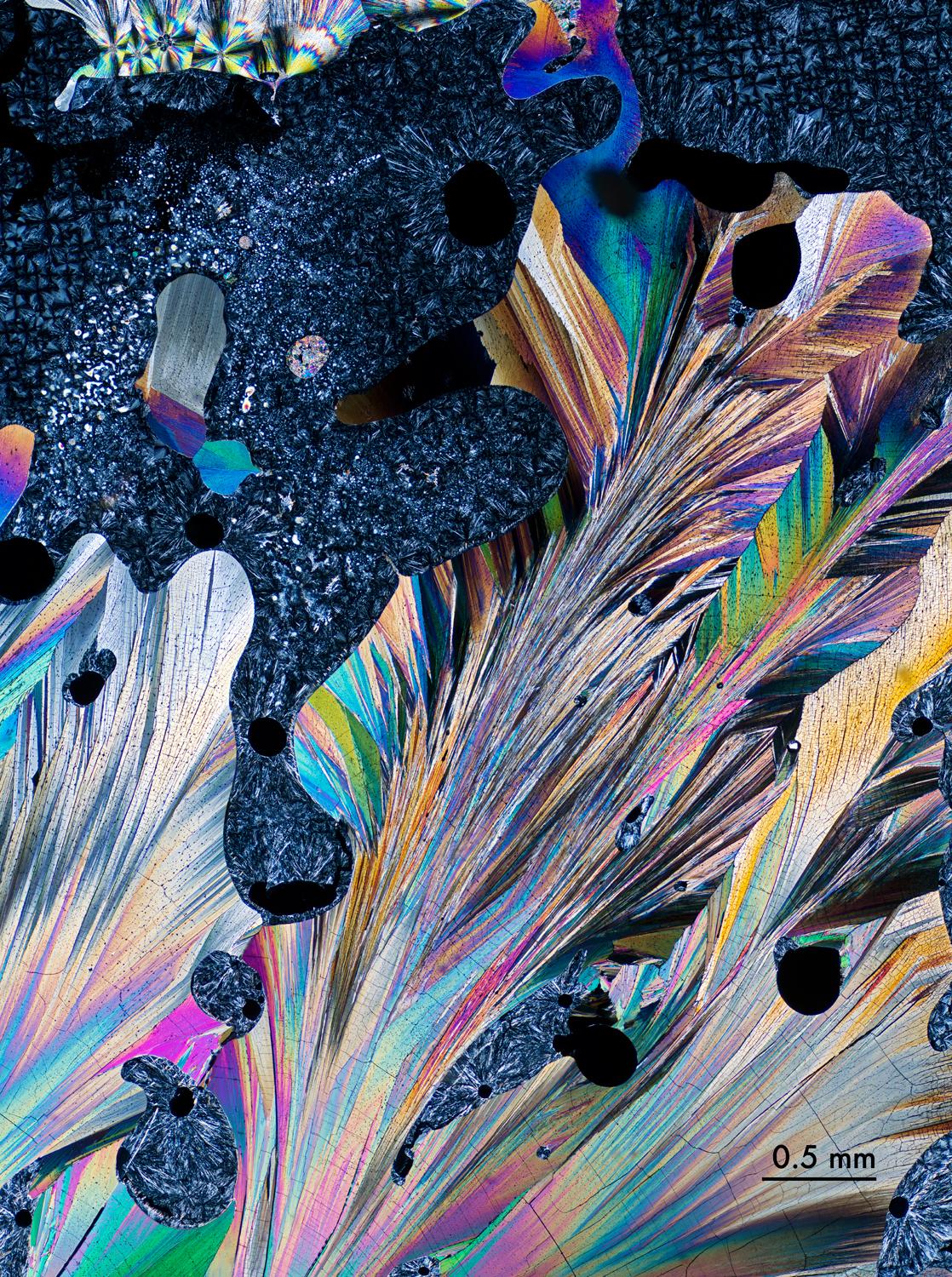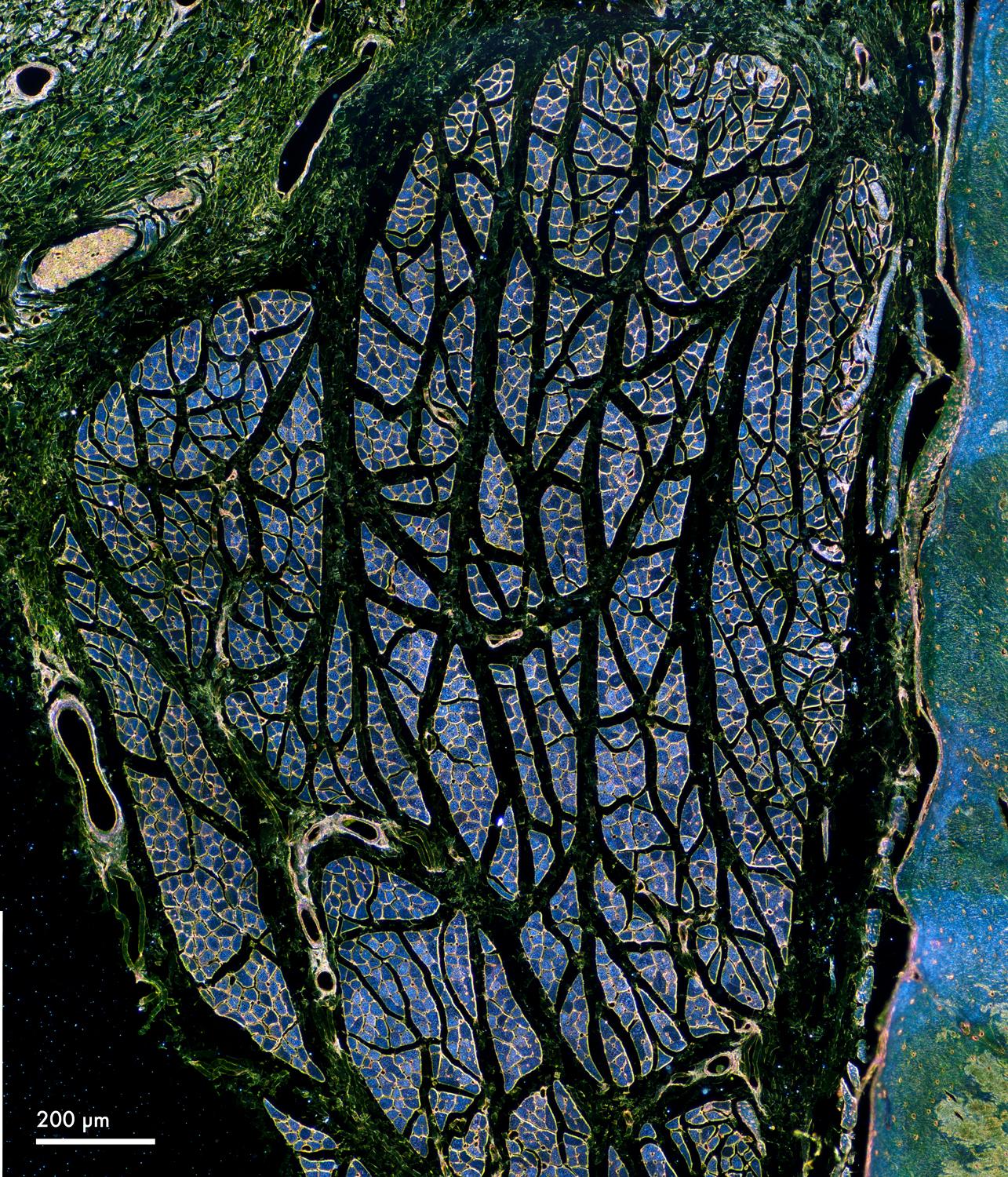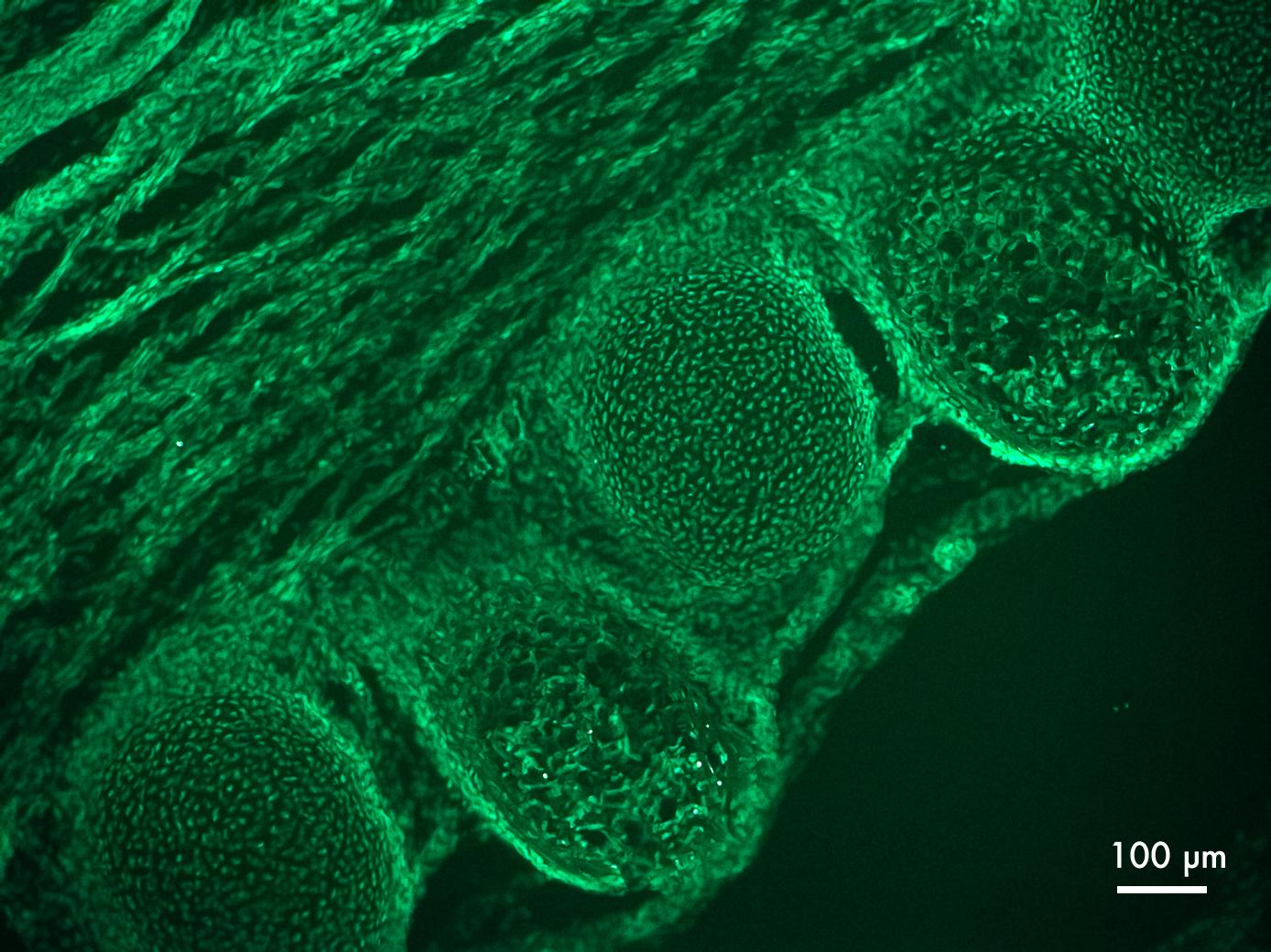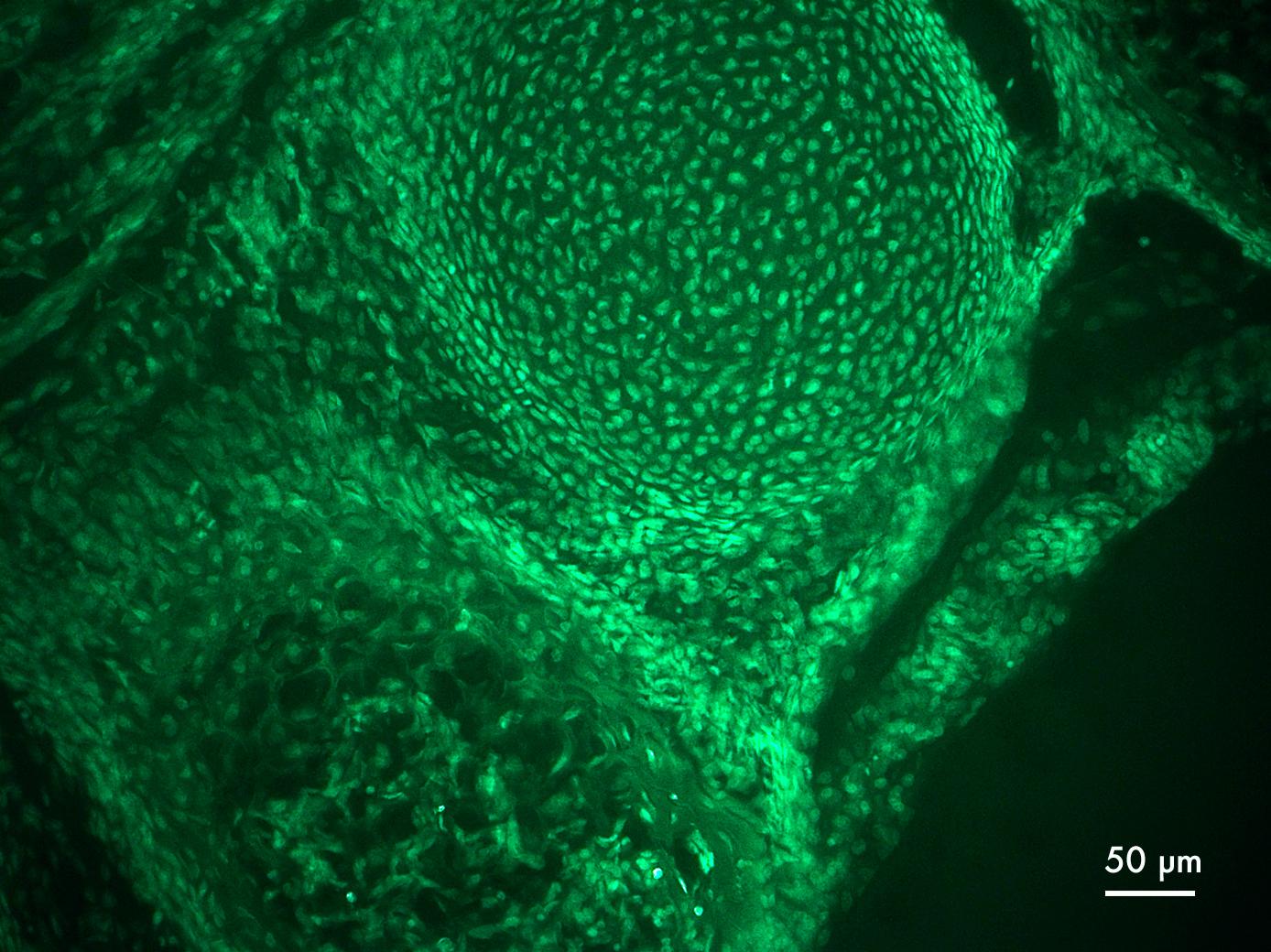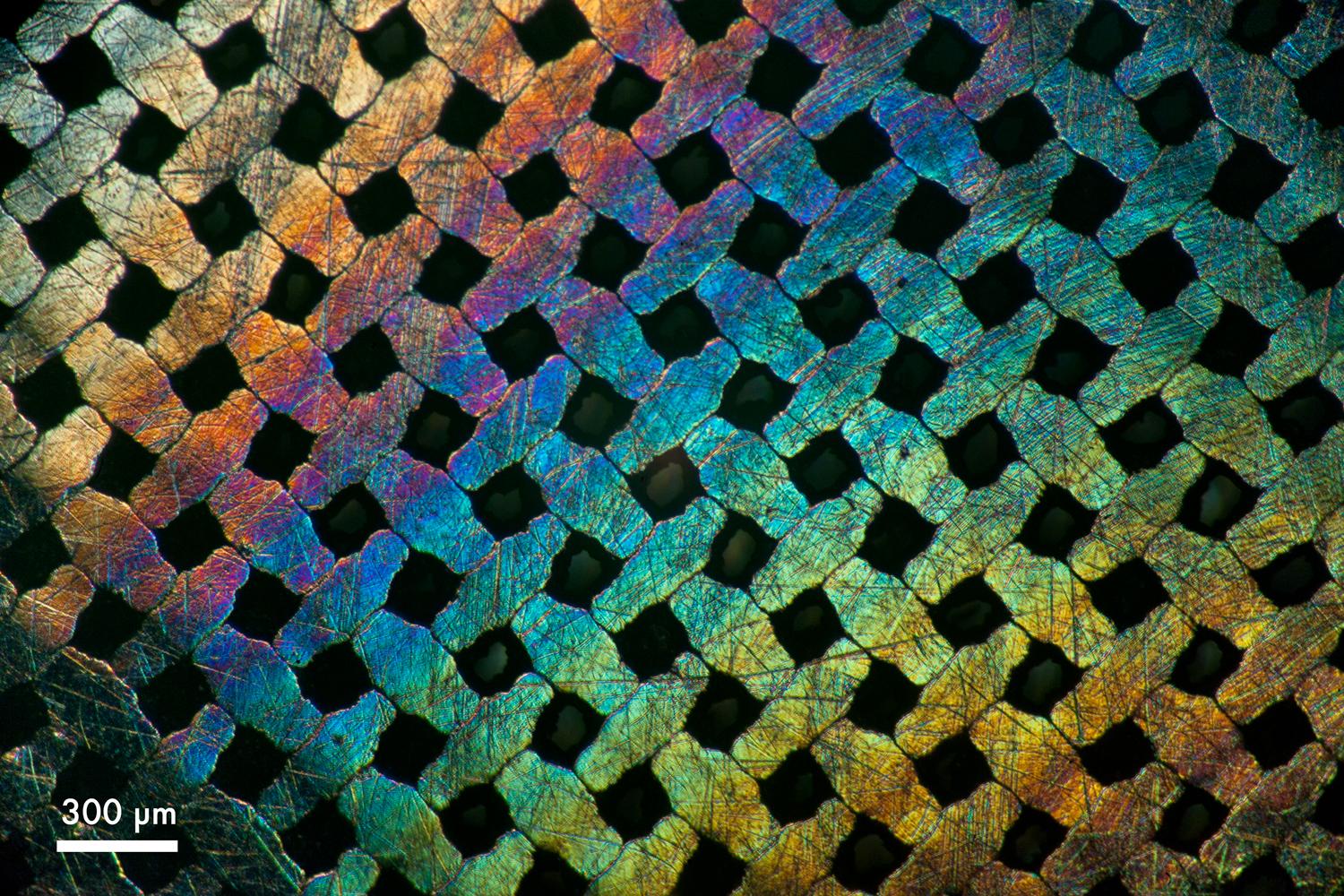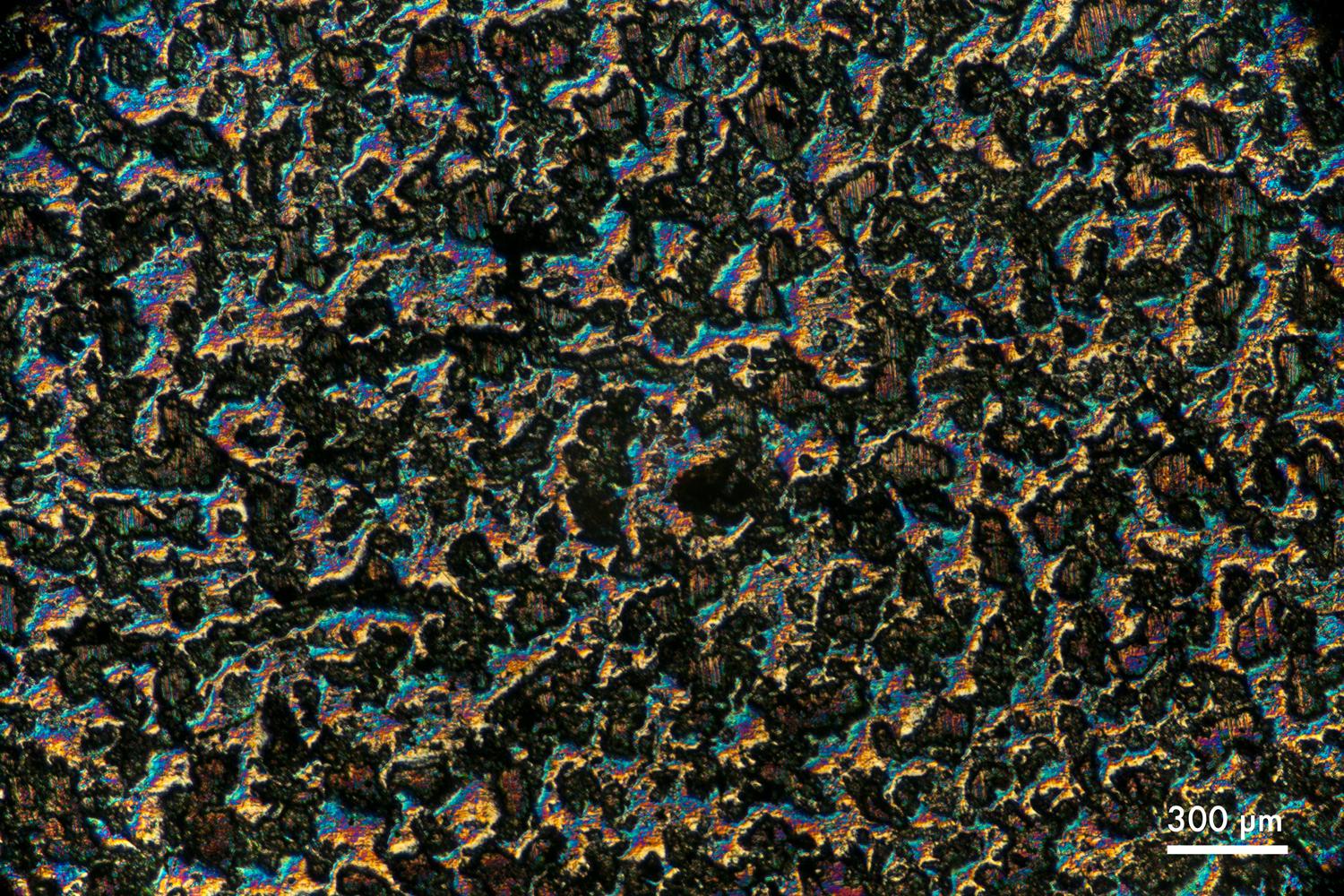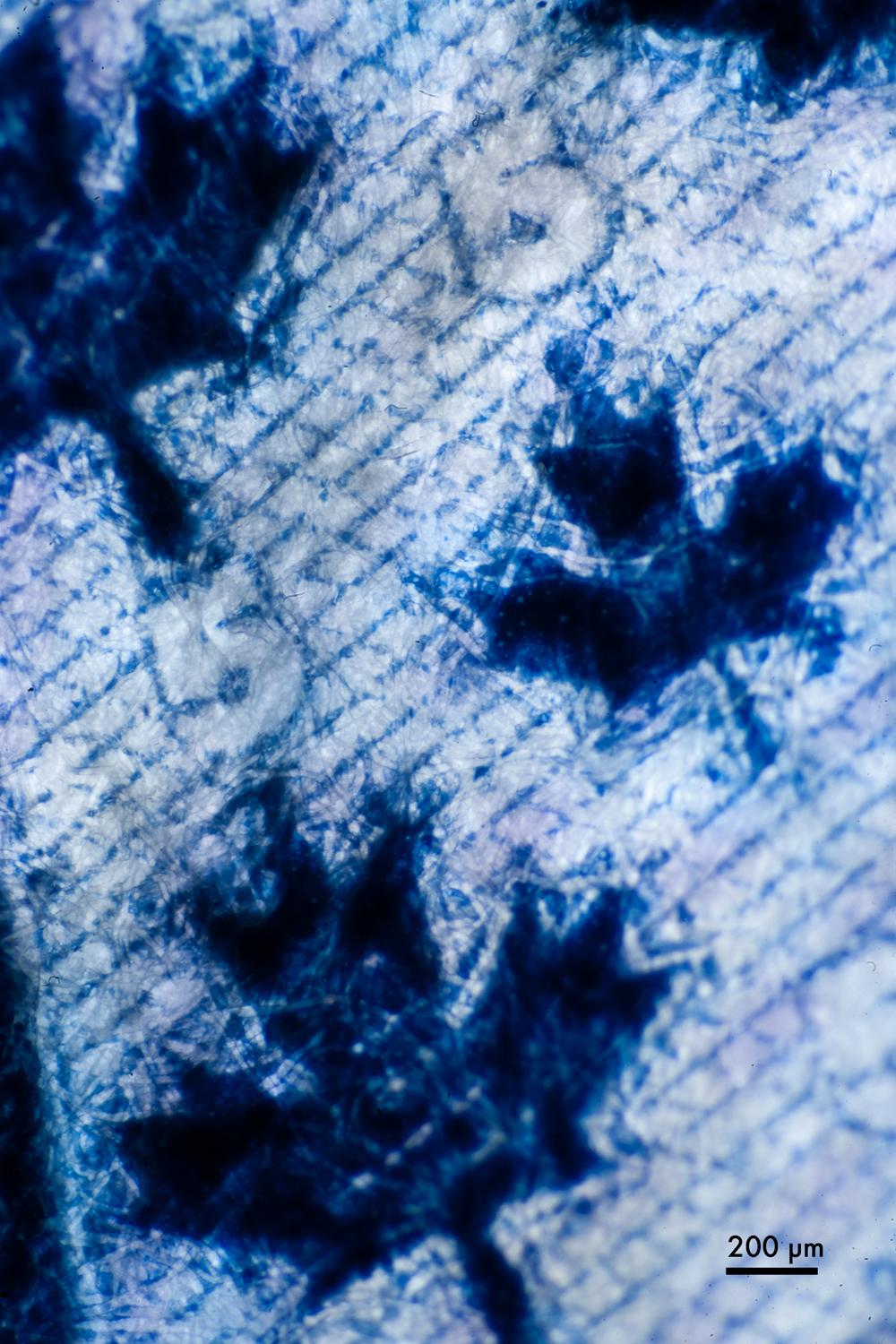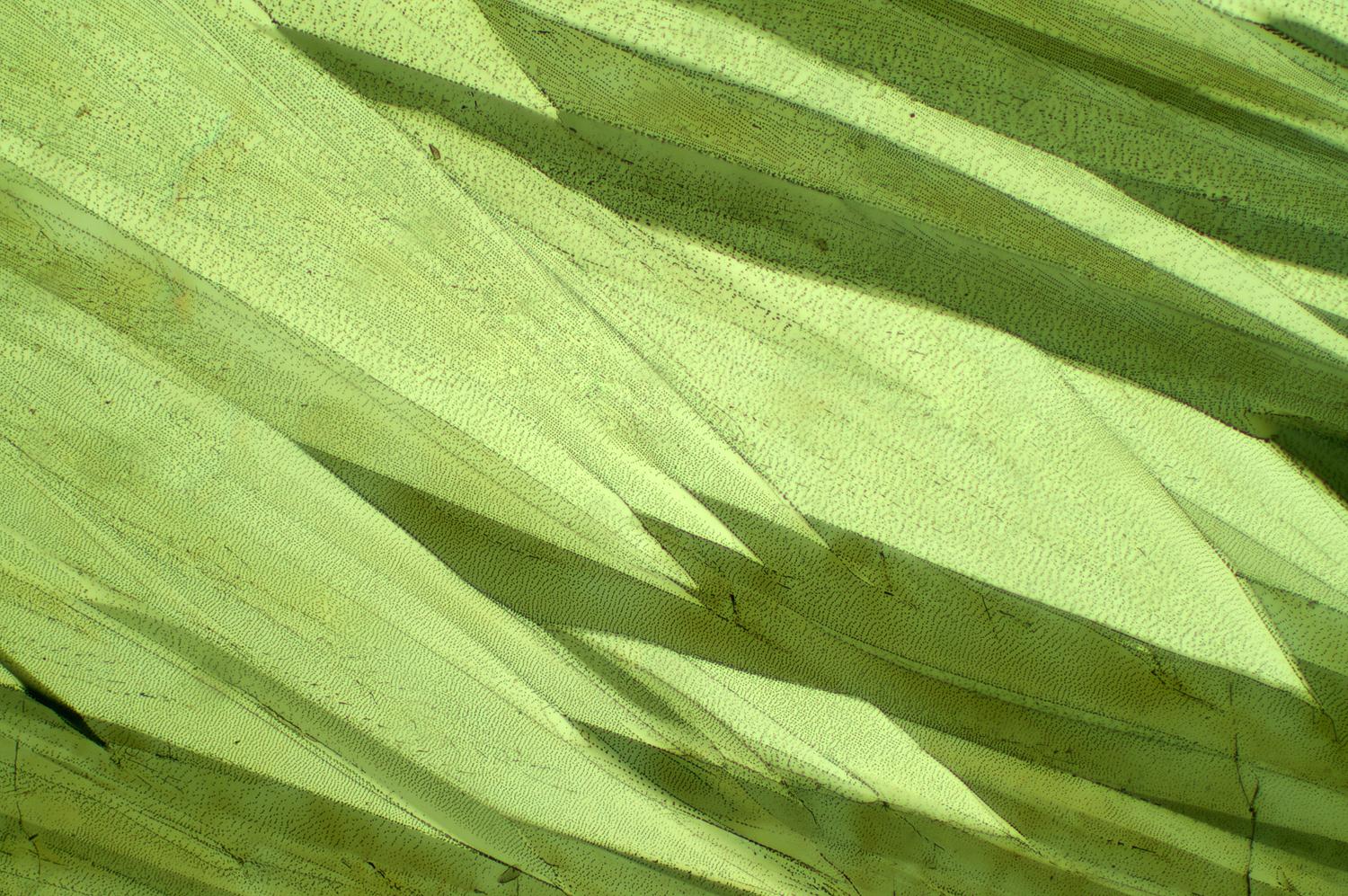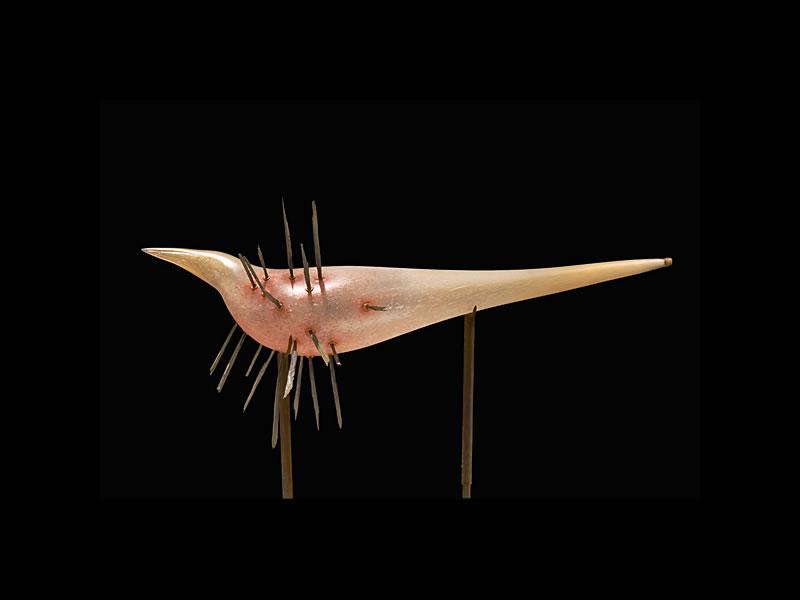Photos Through the Microscope
A sampling of the microscopy methods available to students in the Biomed lab. These images were created for Applied Science Photo. III in the Spring of 2011.
Crystal melt photographed with a polarized microscopy technique. 40 images were captured at 25x magnification with a Nikon D3s and stitched together using PTGUI. Unique colors are generated as the light passing through the crystal is bent due to varying refractive indices within the crystal.
Cat tooth in cross section photographed with Darkfield illumination on a Nikon microscope. 23 images were taken with a Nikon D3s at 20x magnification and then stitched with PTGUI. Honorable Mention in the 2011 Olympus Bioscapes Digital Imaging Competition. 1mm = 1000 microns.
Rat embryo exhibiting D19 fluorescence photographed on a Zeiss Axioskop. 15x magnification at capture. 1mm = 1000 microns.
Rat embryo exhibiting D19 fluorescence photographed on a Zeiss Axioskop. 30x magnification at capture. 1mm = 1000 microns.
An Apple earbud grating photographed with Differential Interference Contrast (DIC). This imaging method is commonly used to look at circuitry and other metallic objects. The rainbow of colors comes from the varying refractive indices of the metal as well as oils present on the earbud. 4x objective used on a Olympus episcopic microscope. 1mm = 1000 microns.
Rust on a razor blade photographed with Differential Interference Contrast (DIC). This imaging method is commonly used to look at circuitry and other metallic objects. The rainbow of colors comes from the varying refractive indices of the metal. 4x objective used on a Olympus episcopic microscope. 1mm = 1000 microns.
Canadian 5 dollar bill photographed with a reflected light microscope. This imaging technique is often used by the printing industry to perform quality control and diagnose printing issues. 4x objective used with a Nikon D3s. 1mm = 1000 microns.









